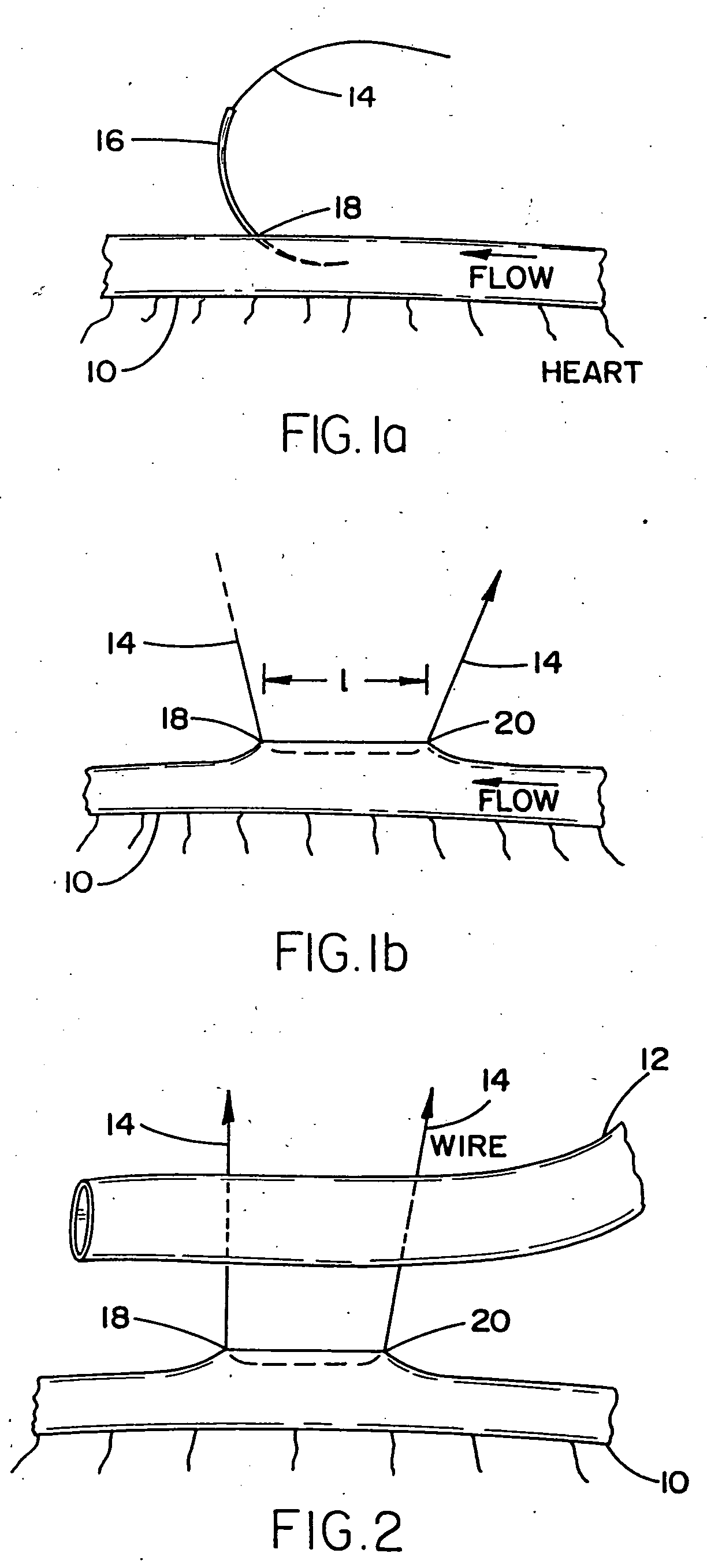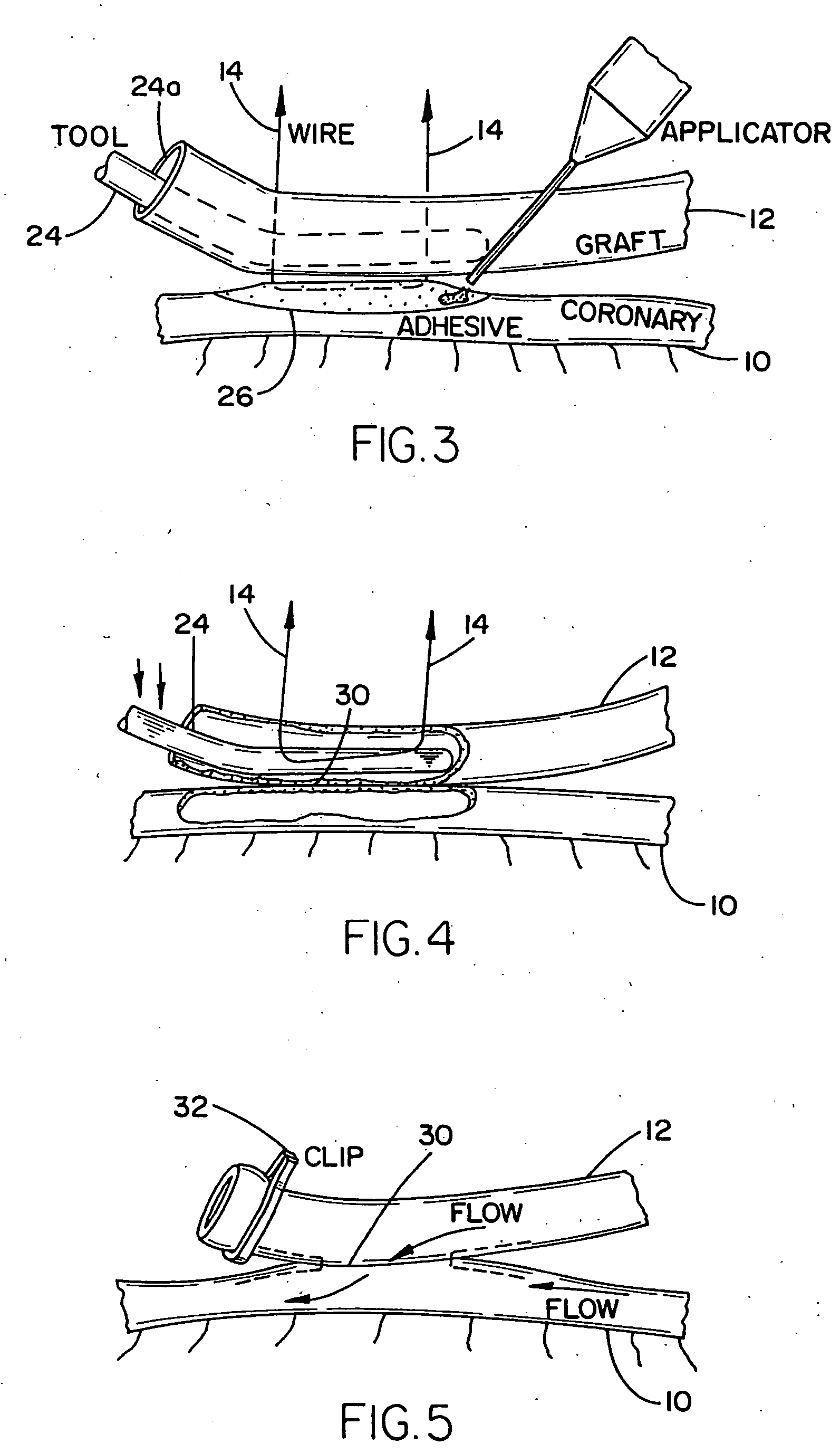Arrangement and method for vascular anastomosis
a vascular anastomosis and arrangement method technology, applied in the field of arrangement and method of vascular anastomosis, can solve the problems of high morbidity and potential mortality, difficulties and shortcomings encountered, and none of them clearly or satisfactorily
- Summary
- Abstract
- Description
- Claims
- Application Information
AI Technical Summary
Benefits of technology
Problems solved by technology
Method used
Image
Examples
Embodiment Construction
[0051] Referring now to a first embodiment of the anastomosis device and flow passage producing method, as indicated schematically in FIGS. 1a-5 of the drawings, there are represented successive steps in implementing a side-to-side anastomosis between a first body vessel 19, such as a coronary artery, and a second vessel 12 which may be a graft, and wherein the vessels 10,12 are intended to be joined in an edge-to-edge contact rather than intima-to-intima contact. As shown in FIG. 1a of the drawings, a suture wire 14 having a suture needle 16, essentially of curved configuration attached at both ends thereof (only one shown) is inserted into the coronary artery 10 at a first location 18 by puncturing the vessel wall. As indicated in FIG. 1b of the drawings, the suture needle 16 at the leading end of the suture wire 14, is manipulated so as to exit the coronary artery 10 at a second generally axial or longitudinally distant point 20 located therefrom at a distance L, therefrom. The n...
PUM
 Login to View More
Login to View More Abstract
Description
Claims
Application Information
 Login to View More
Login to View More - R&D
- Intellectual Property
- Life Sciences
- Materials
- Tech Scout
- Unparalleled Data Quality
- Higher Quality Content
- 60% Fewer Hallucinations
Browse by: Latest US Patents, China's latest patents, Technical Efficacy Thesaurus, Application Domain, Technology Topic, Popular Technical Reports.
© 2025 PatSnap. All rights reserved.Legal|Privacy policy|Modern Slavery Act Transparency Statement|Sitemap|About US| Contact US: help@patsnap.com



